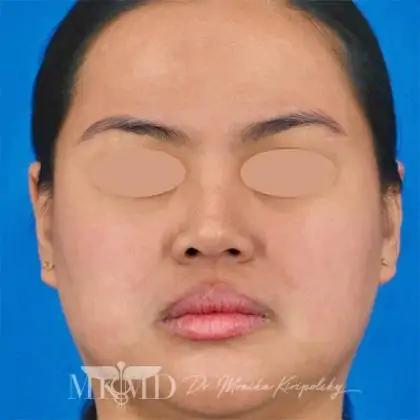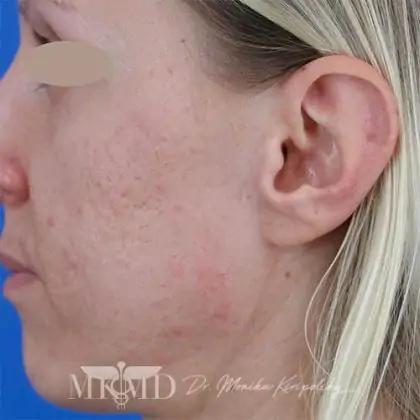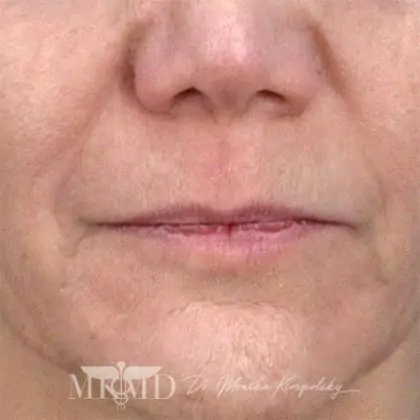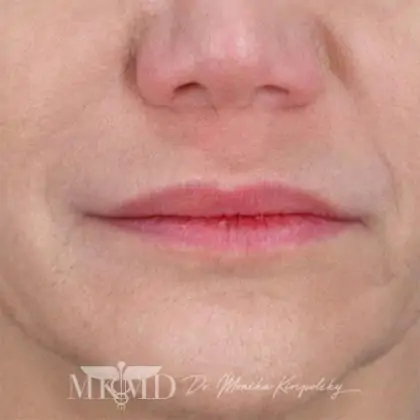We may think of the skin as an important marker for how our body reacts to the outside world. But did you know that your skin is also a marker for your internal health?
Oftentimes, when doctors look to make a diagnosis, they will first evaluate your skin. For example, when you have had a cold, did your skin look pale and moist? Most likely, your answer is yes, and while you may not have paid active attention to your skin, these were signs that led you to the conclusion that your overall health may not have been up to par.
Your skin is the largest organ in your body and one that we can see on a daily basis. Doctors take advantage of this and use its presentation to help make important diagnoses about your overall health. Let’s go through some interesting dermatologic presentations that may indicate your body isn’t working up to its full potential.
Contents
High Cholesterol May First Show Up on The Skin Near Your Eyes!
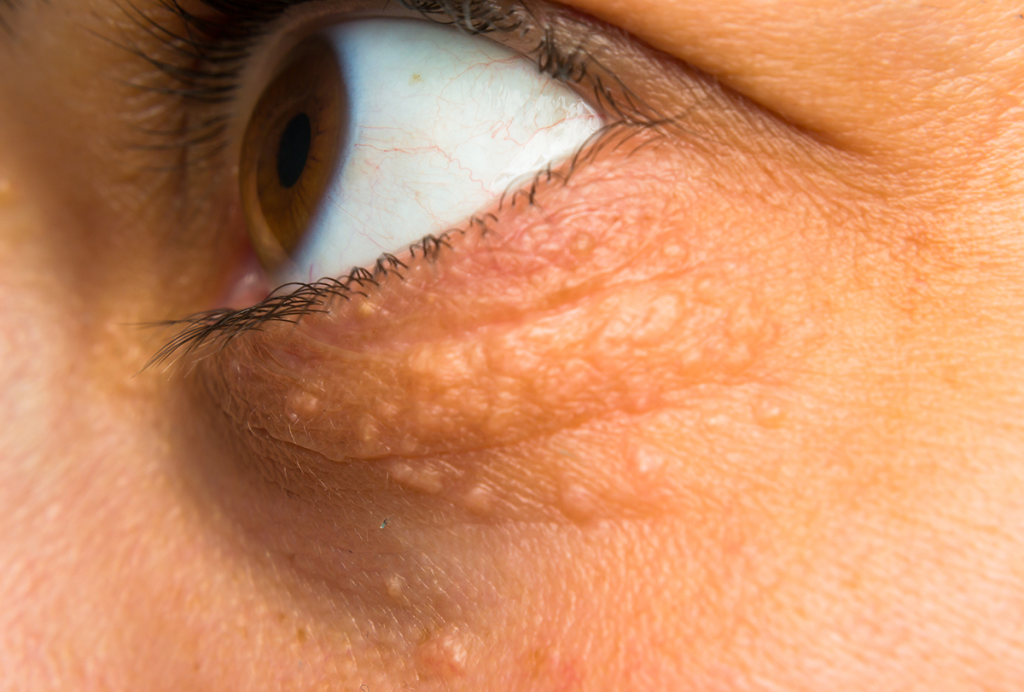
Have you ever noticed bumps near and around your eyelids? These small, white to yellowish bumps that may appear at first like a closed pimple may, in fact, be a cholesterol deposit under your skin called xanthelasma. While xanthelasma are benign, they can be an external sign that the cholesterol in your blood is high. Make sure that you not only see your dermatologist but also your internist/primary care physician to get blood tests that screen for high cholesterol. These skin lesions can be removed with relatively easy cosmetic procedures like gentle hyfrecation.
High Blood Sugar – On Your Skin?!
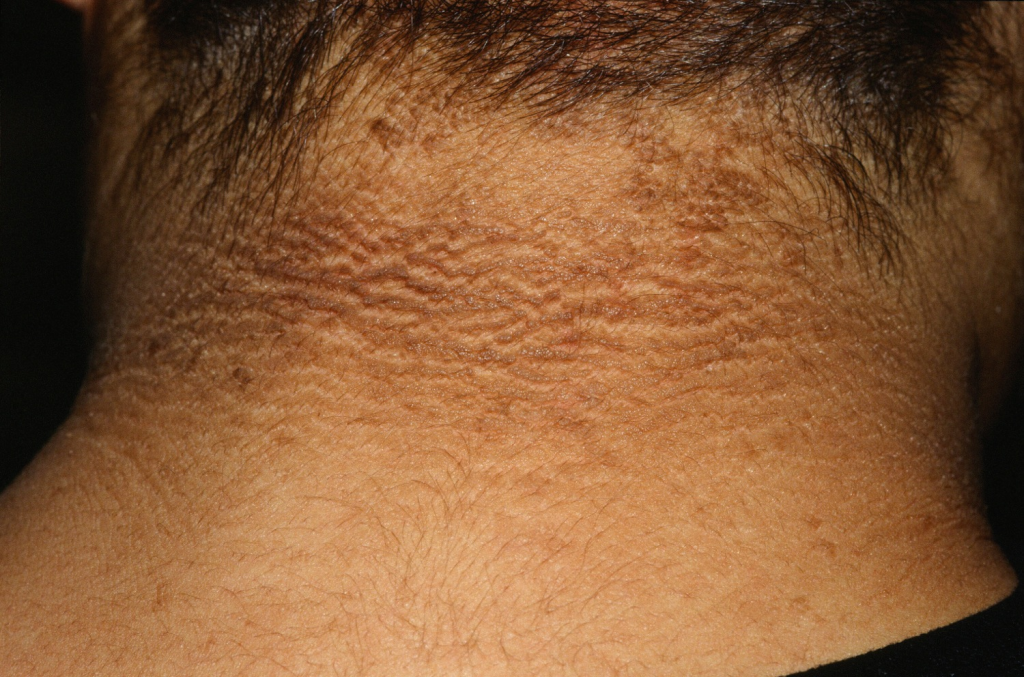
For people who have high blood sugar (including diabetes), your skin may be one of the first areas it manifests. Insulin resistance may present with a thickened outer layer of skin (that appears darker than your other skin) on the back of the neck, armpits, and occasionally the groin. You can scrub it as much as possible, but it will not go away. This is called acanthosis nigricans, and is an external sign of internal insulin resistance (in your blood). Acanthosis nigricans can happen in both children and adults and in an indication that you should see a doctor to check your metabolic health.
Rosy Cheeks are Cute … But Not if it’s Affecting Your Health!

While rosy cheeks are a common telltale sign of rosacea, they could also be an indication of another underlying problem with your health. Cutaneous lupus is an autoimmune disease that causes erythematous (red) rashes on the skin. Look out for a “butterfly” rash pattern on the face, specifically on the cheeks, and go see a board-certified dermatologist, as you should with any new rashes that you develop.
Poor Blood Flow in Your Hands May be Telling You Something Else…
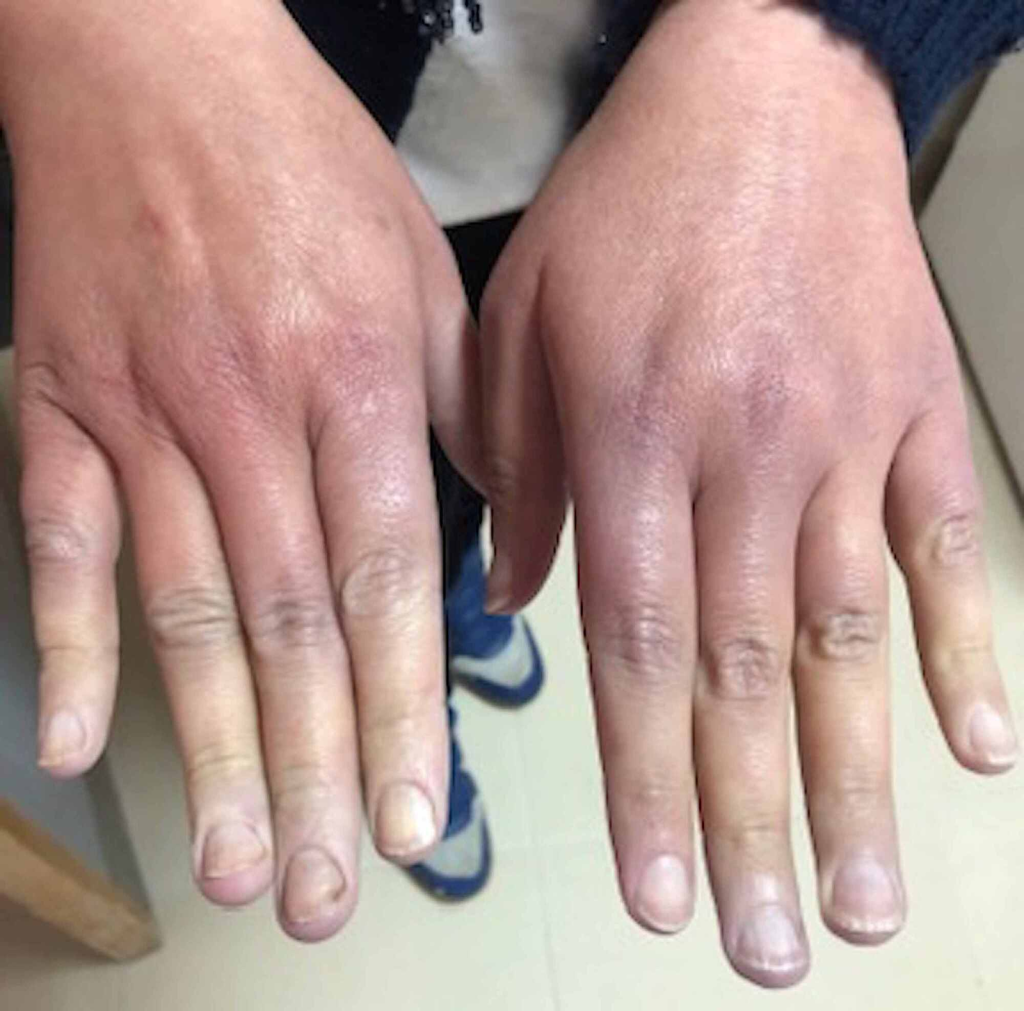
Raynaud’s syndrome is a condition where the small arteries in your hands start to narrow, cutting off blood supply to your fingers. When your blood vessels tighten (vasoconstrict), it leaves the surrounding tissue without adequate blood flow, turning it white or blue depending on your skin color and the severity of the disease. If you experience this on a frequent basis, it might be time to schedule an appointment with your doctor. Although Raynaud’s syndrome may be an isolated phenomenon, it can also be a key skin sign of scleroderma. Scleroderma is a progressive systemic disease that hardens and tightens connective tissue and organs in your body. People with early scleroderma may notice that the skin around their hands begins to tighten, creating a shiny look on the skin.
No More Gluten?

If you have a red, itchy, and bumpy rash, occasionally with clear fluid filled bumps on your elbows +/- knees, you may have something called dermatitis herpetiformis. This skin finding is commonly associated with celiac’s disease, or gluten intolerance. While this condition may appear to look like herpes (simplex or zoster) lesions, it is NOT associated with the virus. If you have noticed this type of rash before, it may be time to see both your dermatologist and primary care physician to best manage your overall health. The condition often clears once you get your blood glucose levels under control.
While we do not have time here to go through all the various medical conditions that manifest in the skin, the biggest takeaway is to always remember that your skin is a fantastic external marker to indicate your general, internal health, and it’s important to pay close attention to it. Do not self-diagnose your skin conditions! Instead, go see a board-certified dermatologist to help you find a definitive diagnosis and further guide your health care.


